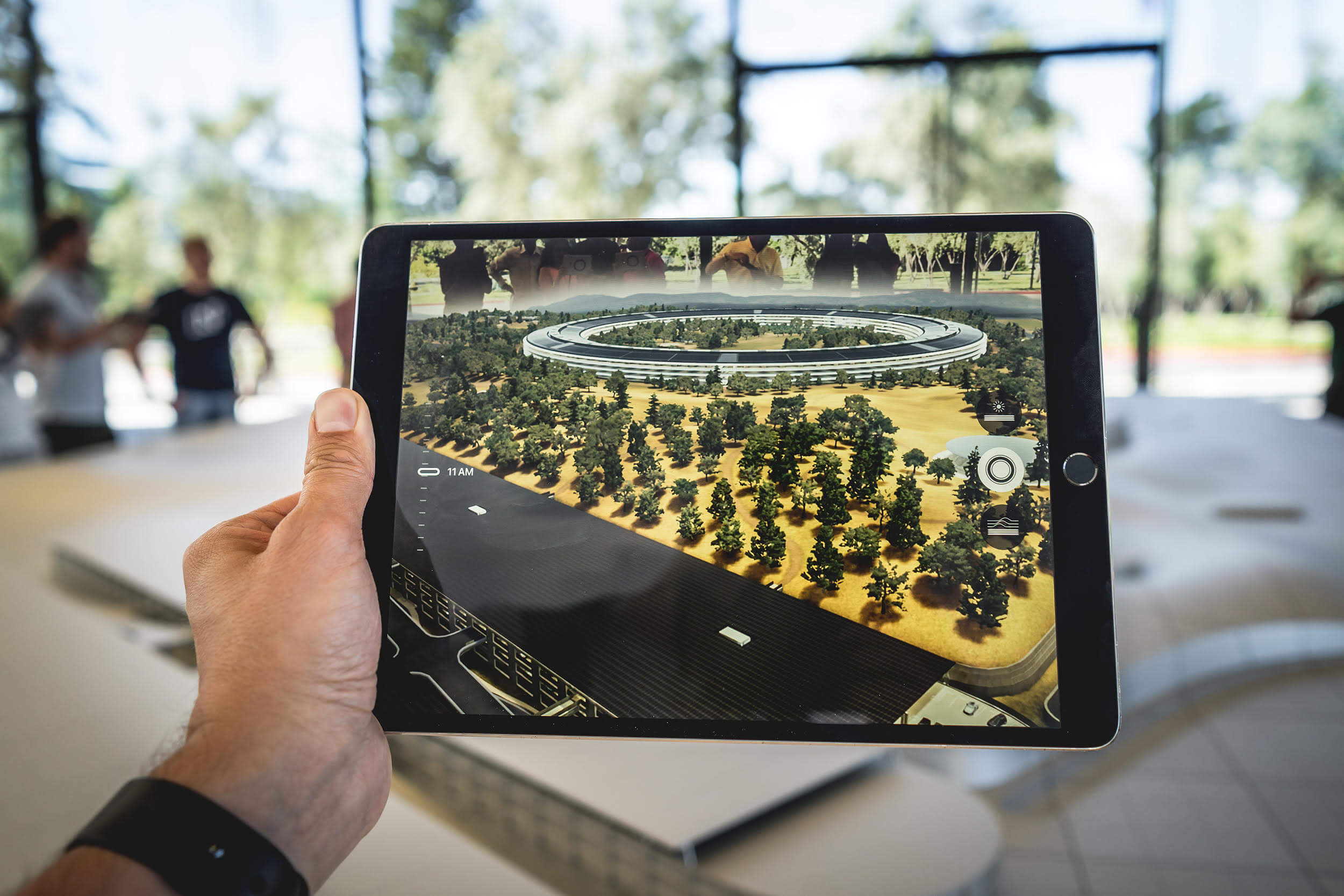
Architecture, Augmented Reality, and the Future of Digital Visualization.
Read Vellum Architecture, Augmented Reality, and the Future of Digital Visualization.
From our home to our workplace, and in the countless drives from one to the other, we inhabit a world where technology pushes change forward every day.
The profound technological advancements of the past thirty years have gradually become available to the masses, and in their proliferation come to redefine how we experience the world. Computer screens are now tactile, no longer a veil between the physical and digital worlds, but a bridge connecting the two.
One of the chief driving forces behind this global change is Augmented Reality, or AR, a technology that overlays digital content onto the physical world using the camera on smart devices. AR itself has been around since the 90s, but only now with the popularity of smartphones can we finally see its true potential to disrupt. In this article, we set out to explore how AR works, why it works, and what lies at the intersection of this amazing technology and the architecture and design industries.
Augmented Reality, or AR, is an experience of real-world environments enhanced with digital content. This AR content is superimposed onto physical objects and spaces, and visualized through the camera on a user’s smartphone.
We are already experiencing the world through our smartphones.
Smart devices have become extensions of ourselves, and sharing our life experiences online is now part of human nature. We see and hear the world through our phones, and have become fully mobile and increasingly connected to each other.
Augmented Reality is organically immersive, and aligns with these social and cultural trends in such a way that it can be easily implemented into multiple aspects of everyday life. Our experience of the world can thus be improved upon, using AR to offer a more fulfilling interaction with our environment.
Today, we find AR in mobile applications, social media filters, and more recently web portals, which once authorized to access a user’s camera can display any type of AR content, including audio, video, and 2D or 3D animations.
Large companies like IKEA have launched AR mobile apps that let potential buyers overlay and modify fully rendered 3D furniture models onto any physical space. By letting users “stage” these scenes in their own home, IKEA minimizes the risk of a return, and expedites a buyer’s experience at IKEA stores.
Interactive, photorealistic, and remotely accessible AR content.
Back in the 1990s, the US Air Force developed the first functional AR system to detect space debris by overlaying existing satellite geographic trajectories on telescope videos. The hardware was massive and prohibitively expensive, and the technology limited to applications useful to the Air Force.
Fast forward a few decades, and we now find new AR content making its way into the mainstream every day, with apps ranging from mobile games like Pokémon GO, to highly interactive and remotely accessible training tools.
As different as the US Air Force is to a Pokémon game, there are three basic questions that have remained unchanged in helping us determine the effectiveness of AR content:
Does the content look real enough when overlayed on a physical setting?
What degree of interaction does it offer to users?
And, where can it be accessed from?
In the context of architecture, the answers to these questions have profound implications for the industry. Having realistic and interactive AR content promotes the illusion that whatever we are seeing is actually there, happening right in front of us, even if we are a thousand miles away. And, how this content is accessed and shared determines the number of users who will get to experience our projects.
The Future of Digital Visualization is Now!
Digital visualization has always played a key role in architecture and design, helping clients, designers, and contractors visualize a project at every stage of the design process. But, drawings and elevations, even when complemented with photorealistic renderings, are often not enough to convey the full scope of a project.
Augmented Reality offers architects an alternative to these traditional visualization methods, and redefines how clients visualize a design, and how designers and contractors navigate and manage a site both physically and remotely.
In its simplest form, AR can turn existing traditional drawings and renderings into highly interactive content that clients can access from anywhere.
For designers, AR offers the option of synchronizing work at the office and project site, cutting down on cost and construction times. On-site contractors, for example, can be guided remotely through the construction process of complex geometries using AR overlays of a CAD drawing or 3D model. Architects can also send smart devices to a project, and conduct remote site management by sharing design overlays with the device. Such solutions include Morpholio’s AR SketchWalk, a mobile app that allows designers to make edits to digital content, and then feed these changes in real time to an on-site contractor’s smart helmet.
Vellum Architects – Where embracing change has become tradition.
At Vellum Architects we are no strangers to the implementation of emerging technologies into our design process, and we believe that our industry could benefit greatly from a better grasp of Augmented Reality and its applications.
There is a common misunderstanding that emerging technologies remain as expensive as ever, and as such are limited to a small audience of those who can afford them. But, with AR already having become part of our everyday lives, it makes sense for small firms to take the helm and venture into the future.
This is the same mentality that has always defined our philosophy at Vellum, and that now leads us to an exploration of emerging technologies and the role they play in architecture. So, stay tuned for future articles on this series, where we will write on Virtual Reality, Mixed Reality, and other technologies changing our world.




